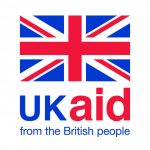A common requirement in humanitarian cash and voucher assistance (CVA) is recipient verification at the household level. Verification serves two purposes. First, it ensures that the intended recipient of the cash is the right one, and second, it provides an audit trail for accountability and reporting to both the humanitarian organisation and donors.
In Somaliland, verification is a long and expensive process. At a co-creation workshop convened by the GSMA Mobile for Humanitarian Innovation (M4H) programme – held in February 2019 in Hargeisa, Somaliland – CARE Somalia highlighted two key challenges in recipient verification. The first was getting prompt feedback from recipients as confirmation and proof of payment, other than the Telesom cash disbursement report. The second was logistical challenges in reaching every single recipient – especially in remote areas – after every disbursement, so that recipients can confirm cash received by signature or thumbprint. CARE wanted to explore the use of technology to address these issues in verification. CARE field officers often have to travel many hundreds of kilometres after each disbursement cycle in order to reach recipients for both verification and Post Distribution Monitoring (PDM), which is done to monitor how the households are using the cash. This manual verification is done for over 58,000 households of the various programs run by CARE in Somalia.
In looking to address the challenges faced in verification, CARE and Telesom, supported by the GSMA M4H programme, have collaborated in piloting the use of mobile voice identification in Somaliland for 2,000 households. The solution works by comparing a voice signature that is collected during registration to a signature given during disbursement. If the voice signature’s match then the cash is successfully disbursed via mobile money. A demonstration of the solution can be seen in the video below, a short from our GSMA Thrive Africa event in September 2020.
This solution is a good example of successful co-creation and joint solutions development between humanitarian actors and mobile network operators that result in joint investment and risk sharing for sustainable outcomes.
The GSMA M4H team will be sharing the learnings from this project in a case study to be released in early this year.


